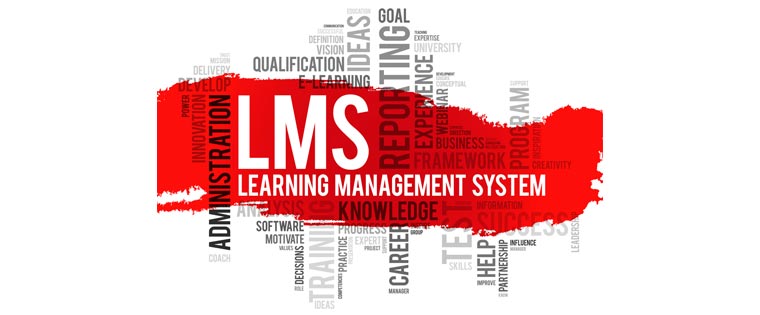Here’s How You Can Create the Perfect Blend of ILT and E-learning

For years, companies relied on the instructor-led training (ILT) format to impart knowledge and skills to their workforce. The classroom training medium is highly effective, but has two major limitations – it is inflexible and expensive. To overcome these limitations, many organizations are blending e-learning methodologies with the trainer-led format.
→ Download eBook: Classroom to eLearning Conversion - Everything You Always Wanted to Know
A well-formulated, effective blend of training formats helps companies provide a high degree of flexibility to learners. Learners can be better involved through various types of instructional material. Blended learning helps the trainer evaluate learner trends and proceed accordingly. It helps firms to reap the advantages of the online learning medium, while retaining the “human touch” in their training programs.
Many training programs have several components which can be delivered in a classroom and online. For instance, a sales training program comprises two vital elements – knowledge of products and selling skills. The former can be imparted through e-learning, whereas selling skills can be developed through face-to-face coaching delivered by an experienced sales trainer. Let us now see how to blend the ILT format with e-learning.
A Framework to Blend Classroom and Online Training Methodologies
Nick Van Dam, Global Chief Learning Officer at McKinsey & Company, in his book The E-learning Fieldbook: Implementation Lessons and Case Studies from Companies that are Making E-Learning Work, has come up with a framework that helps meet various learning goals. Given below is the framework.
Learning Goal |
ILT |
E-learning |
| Acquire initial learning | Trainer-led presentations, lectures | Self-paced online learning modules, documents published to the web |
| Acquire advanced learning | Instructor-led presentations with live demos/ hands-on exercises | E-learning tutorials with practice questions and exercises, and tests |
| Apply learning in simple situations | Group discussions or simple role plays | Courseware with simple scenarios, simulations |
| Practice learning | Hands-on practice sessions with feedback | Online practice exercises, simulations with feedback, games, interactive modules |
| Apply learning in complex situations | Role plays, scenario-based or situated learning, expert presentations with group discussions and practice, case studies, advanced workshops | Highly interactive courseware, with complex scenarios, role plays, online videos for situated learning |
| Test learning (Assessments) | Paper-based tests, hands-on exercises with feedback, observation by experts | Online tests, simulation-based tests |
| Support and reinforce learning | Mentoring sessions and best practices | Online self-paced courseware, structured online support, performance support tools |
Let us now see how this framework can be applied, using the example of delivery of training on Salesforce (one of the most widely used CRM software).
Using Nick Van Dam’s blended learning framework for training employees on Salesforce
Learning Goal |
ILT |
E-learning |
| Providing training on the basics of a software application | A classroom session introducing the learner to Salesforce. | Online courses explaining the fundamental features of the computer-based application and what they are useful for
Ex. Different tools available in Salesforce and what you can do with them. |
| Delivering advanced training on the software | Workshops demonstrating how Salesforce functions
Ex: Trainer-led sessions explaining the execution of an e-mail marketing campaign using the CRM system. |
Online courses that contain videos explaining the procedure involved in the functioning of Salesforce
Ex: A video-based e-learning course on the execution of an e-mail marketing campaign using the CRM system, followed by questions. |
| Applying learning in simple situations | Classroom programs discussing simple activities performed by the software.
Ex: Weekly classroom sessions discussing the creation of a list of new leads in a given month |
Watch, Try, Do (WTD) simulation-based online courses enabling staff members use the learning at work.
Ex: A WTD simulation of creating a list of new leads |
| Practicing learning | ILT sessions providing hands-on practice with proper feedback.
Ex: Workshops where employees practice various activities involving the Marketing Cloud application, depending on the tasks they perform such as e-mail marketing, social media marketing, and so on. |
Try, Do simulations providing immediate feedback
Ex: An online learning module that allows learners to practice the steps required to perform different activities involving the Marketing Cloud tool. |
| Applying learning in complex situations | Classroom training sessions where learners are trained how to act in various situations.
Ex: Trainer-led workshops explaining how to analyze the data collected using the Sales Analytics tool |
Simulation-based web-based learning modules that allow learners to use their knowledge and skills in complex situations
Ex: Simulation-based e-learning courses where learners can practice the steps involved in analyzing information in pre-loaded dashboards. |
| Test learning | ILT sessions where hands-on exercises are provided to assess the learner.
Ex: A workshop where employees are asked to create a list of new customers. |
Online materials containing Do simulations that require employees to complete an activity without any help.
Ex: A Do simulation where a staff member must perform the procedure to create a list of new leads. |
| Learning support and reinforcement | A trainer-led session listing the best practices of using Salesforce
Ex: A workshop sharing the best practices of using the CRM system to conduct blog campaigns. |
Electronic job-aids to enhance the efficiency of your workforce
Ex: A mobile performance support app that an employee can refer to whenever he has a doubt while conducting a blog campaign. |
A good blend of learning formats goes a long way in imparting the required knowledge and skills to your workforce effectively. Use the framework described above to formulate the winning blend of ILT and e-learning methodologies.





